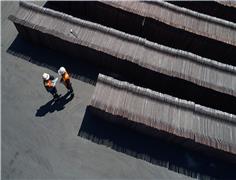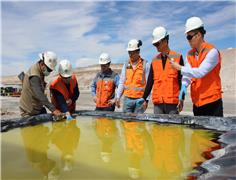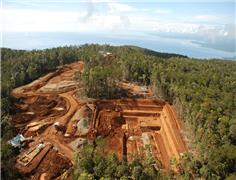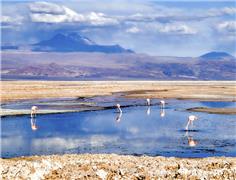- Write by:
-
Thursday, August 10, 2023 - 22:15:15
-
155 Visit
-
Print

Mining News Pro - The electric car revolution puts America’s Indigenous communities at risk, a new paper soon to be published in Harvard Environment Law Review shows.
According to the study, the rise in electric vehicle production in the United States is accompanied by an increase in domestic mining for the minerals and metals included in EV batteries. However, many of these raw materials, such as lithium and cobalt, are located in or near tribal lands, including sacred and culturally important sites.
“The Imperial Valley in California has one of the largest deposits of lithium in the world. There are also deposits in Oregon, Nevada, North Dakota, Tennessee, and Arkansas. The vast majority of nickel, copper, and lithium are located within 35 miles of Indian reservations,” Lisa Benjamin, lead author of a paper, said in a media statement.
In order to prevent harm to Native communities, Benjamin urges the Bureau of Land Management to adopt stricter requirements prohibiting mining not only at sacred sites on reservations but also in any adjacent areas deemed culturally important.
In her view, one area of focus is an update to the 1872 General Mining Act, which was passed during a period of exploration and exploitation of the American West.
“If the regulations are reimplemented, or redrafted, that could lead to more consultation with tribes,” Benjamin said. “This is especially important in areas that may be off-reservation but still of cultural importance to tribal communities to ensure that their interests are fully taken into account when people mine for those materials.”
The researcher also recommends that the Bureau of Land Management strengthens its process for including Native communities in the agency’s decision-making procedures.
While Benjamin acknowledges that the transition to greater electric vehicle use is important for achieving climate and environmental justice goals for a number of disadvantaged communities, she also noted that it is important to ask: “How do we make sure that the transition not only provides benefits for these communities but also does not further disadvantage them?”
Environmental justice
“Because of discriminatory policies, highways were built near and through Black and brown communities, making these communities much more vulnerable to chronic illnesses like heart disease and diabetes through exposure to air pollution,” Benjamin pointed out.
The professor and her colleagues argue that a reduction in gas-powered cars will be especially beneficial to communities of colour and/or low-income communities who have been disproportionately harmed by environmental burdens.
Yet, the researchers found that cost barriers and the lack of availability of charging stations and other infrastructure are preventing the wider adoption of EVs in such areas.
In addition, EVs are not affordable for most people living in lower-income communities. “They have to be more affordable if we are going to provide economic justice for communities who have been discriminated against,” Benjamin said.
Short Link:
https://www.miningnews.ir/En/News/627216

Jiang Weiping, the founder of major Chinese lithium producer Tianqi Lithium Corp., resigned as chairman after the ...

Glencore expects profit at its trading division this year to be at the top end of its long-term annual guidance, in an ...

China’s Tianqi Lithium said on Thursday it has formally requested that a proposed joint venture between lithium company ...

The Democratic Republic of Congo’s government notified Apple Inc. of concerns that the company’s supply chain may be ...

India is in talks with several countries seeking partnerships for technical help on lithium processing, said four ...

Eramet subsidiary SLN’s nickel mining operations in northern New Caledonia have been suspended, adding to difficulties ...

Chile’s state copper company Codelco defended its proposed lithium production tie-up with SQM in response to criticism ...

Brazilian miner Vale on Wednesday said lower prices for iron ore, nickel and copper in the first quarter dragged down ...

BHP Group Ltd. proposed a takeover of Anglo American Plc that values the smaller miner at £31.1 billion ($38.8 billion), ...
No comments have been posted yet ...